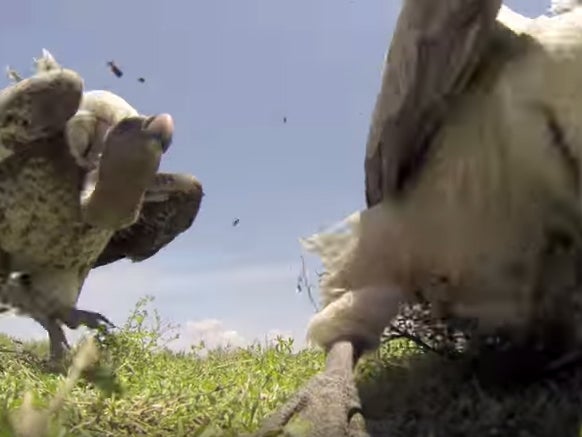Researchers demonstrate what it is like to be eaten by vultures
National Geographic magazine placed a camera inside a wildebeest as vultures began the scavenge its remains.

Your support helps us to tell the story
From reproductive rights to climate change to Big Tech, The Independent is on the ground when the story is developing. Whether it's investigating the financials of Elon Musk's pro-Trump PAC or producing our latest documentary, 'The A Word', which shines a light on the American women fighting for reproductive rights, we know how important it is to parse out the facts from the messaging.
At such a critical moment in US history, we need reporters on the ground. Your donation allows us to keep sending journalists to speak to both sides of the story.
The Independent is trusted by Americans across the entire political spectrum. And unlike many other quality news outlets, we choose not to lock Americans out of our reporting and analysis with paywalls. We believe quality journalism should be available to everyone, paid for by those who can afford it.
Your support makes all the difference.Researchers in the Serengeti placed a Go-Pro inside a wildebeest carcass in order to capture footage of vultures as they tear the animal apart.
The video raises awareness about declining vulture populations, with the disturbing statistic that in some parts of the world vultures have declined by 95% , mainly because of habitat and poisoning.
The scavengers are also hunted for their bones, feathers and eyes for use in witchcraft. Many experts have predicted that the vulture could be extinct within the next 50-100 years.
The drop in numbers could cause problems for the local population as the birds unique digestive system can prevent the spread of disease; killing bacteria related to gangrene and tetanus.
Join our commenting forum
Join thought-provoking conversations, follow other Independent readers and see their replies
Comments